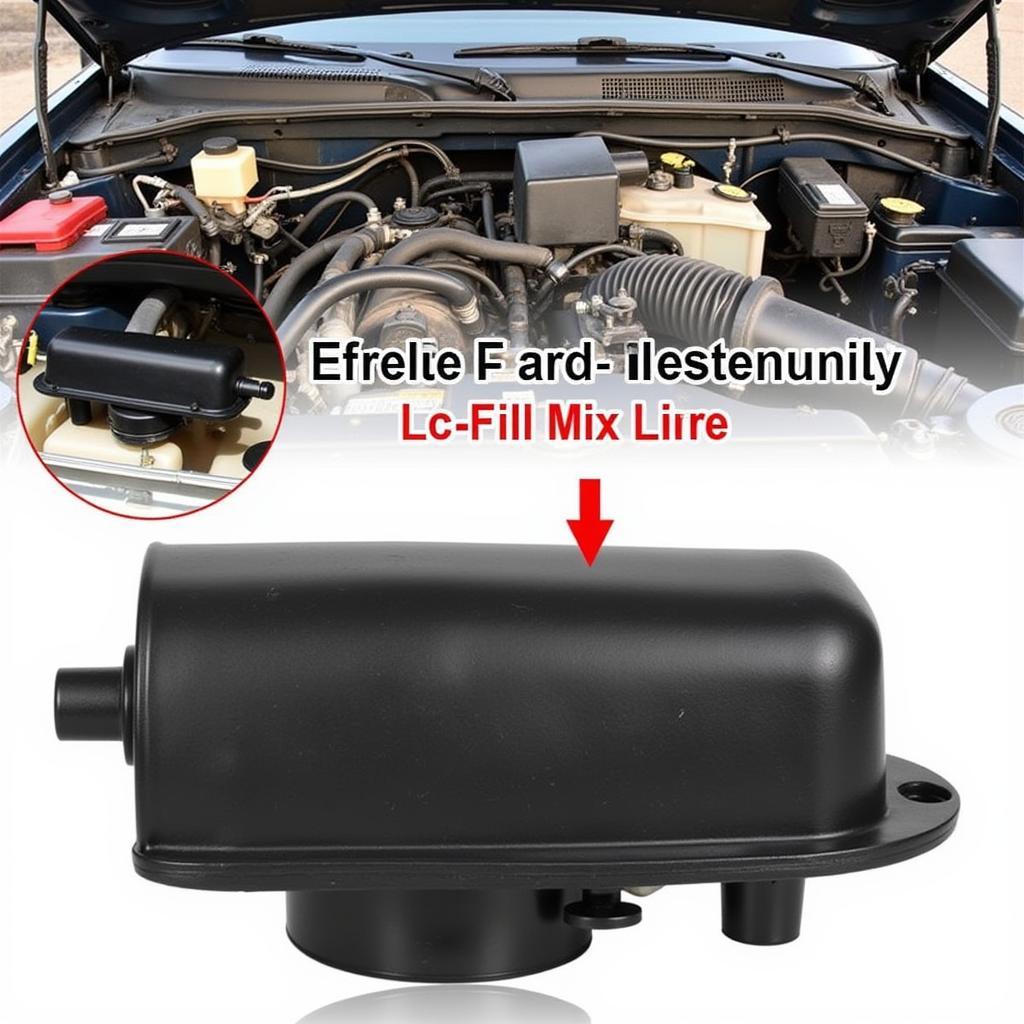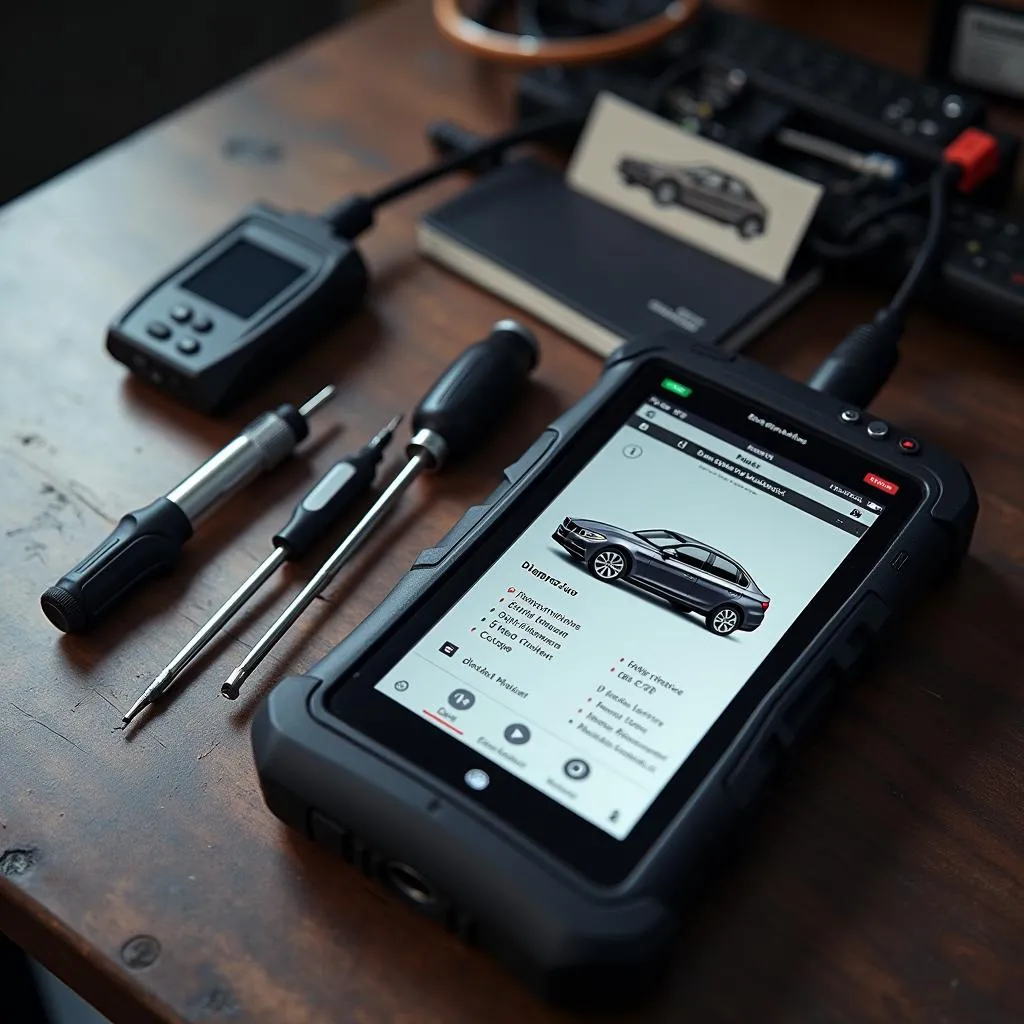The air brake system in a military truck is a complex and vital component, responsible for bringing these heavy-duty vehicles to a safe stop. At the heart of this system lies the air brake gauge cluster, often manufactured by reputable brands like Stewart Warner. This cluster provides the driver with critical information about the air pressure in the various circuits, enabling them to monitor the system’s health and diagnose potential problems.
However, like any intricate system, air brake gauge clusters, particularly in demanding military truck applications, can encounter issues. These issues can range from inaccurate readings to complete malfunctions, potentially jeopardizing the vehicle’s safety and operational efficiency.
Understanding Your Air Brake Gauge Cluster
Before delving into troubleshooting, it’s crucial to understand the information presented by your Stewart Warner air brake gauge cluster. Typically, you’ll find gauges for:
- Primary Reservoir Pressure: This gauge indicates the air pressure in the primary reservoir, the main source of compressed air for the brakes.
- Secondary Reservoir Pressure: This gauge shows the pressure in the reservoir dedicated to the front brakes.
- Service Brake Pressure: This gauge displays the air pressure being sent to the service brakes when you press the brake pedal.
- Parking Brake Pressure: This gauge monitors the air pressure in the spring brake system, responsible for the parking brake.
Common Issues and Troubleshooting Tips
Let’s explore some common issues encountered with military truck air brake gauge clusters and provide practical troubleshooting steps:
1. Inaccurate Gauge Readings
Possible Causes:
- Air Leaks: Leaks in the air lines, fittings, or components can lead to pressure drops, causing inaccurate readings.
- Faulty Gauge: The gauge itself may be malfunctioning due to wear and tear or damage.
- Sensor Problems: If the gauge cluster uses sensors to measure pressure, a faulty sensor can transmit incorrect data.
Troubleshooting Steps:
- Check for Air Leaks: Inspect all air lines, fittings, and components for any signs of leaks, such as hissing sounds or visible air escaping. Use soapy water to pinpoint leaks.
- Inspect Gauge Connections: Ensure that the gauge is properly connected to the air lines and there is no damage to the connecting hoses or fittings.
- Consider Gauge Calibration: Over time, gauges can lose calibration. Consult a qualified technician to check and recalibrate the gauge if necessary.
- Diagnose Sensor Issues: If equipped with sensors, use a diagnostic tool to check for sensor faults and replace any faulty sensors.
2. Gauge Not Responding
Possible Causes:
- Electrical Problems: Issues with the gauge cluster’s electrical wiring or power supply can prevent it from functioning correctly.
- Blown Fuse: A blown fuse in the circuit powering the gauge cluster can cause a complete outage.
- Internal Gauge Failure: The gauge mechanism itself may have suffered an internal failure.
Troubleshooting Steps:
- Check Fuses: Locate the fuse box for the vehicle and check the fuse associated with the air brake system and gauge cluster. Replace any blown fuses.
- Inspect Wiring and Connections: Examine the wiring harness connected to the gauge cluster for any loose connections, corrosion, or damage. Repair or replace any faulty wiring.
- Test Power Supply: Use a multimeter to check for proper voltage at the gauge cluster’s power supply connection.
- Gauge Replacement: If all else fails, the gauge itself may need replacement.
3. Warning Lights Illuminated
Possible Causes:
- Low Air Pressure: One of the most common reasons for warning lights is low air pressure in the system, often caused by leaks or a malfunctioning compressor.
- Electrical Faults: Short circuits or wiring issues in the warning light circuit can cause them to illuminate incorrectly.
- Faulty Warning Light: The warning light bulb itself might be burnt out.
Troubleshooting Steps:
-
Address Low Air Pressure: If a low air pressure warning light is illuminated, refer to the “Inaccurate Gauge Readings” section for troubleshooting steps.
-
Inspect Warning Light Circuit: Check the wiring and connections associated with the warning light for any faults.
-
Test or Replace Warning Light Bulb: If necessary, test the warning light bulb and replace it if it is burnt out.
“Always address warning light illuminations promptly. Ignoring these warnings could lead to a complete brake system failure.” – Sgt. Michael Thompson, US Army Mechanic (Retd.)
Preventive Maintenance for Your Air Brake Gauge Cluster
Regular preventive maintenance can help prevent issues with your Stewart Warner air brake gauge cluster:
-
Visual Inspections: Regularly inspect the gauge cluster for any signs of damage, loose connections, or wear.
-
Air System Checks: Perform regular air system checks to detect leaks and ensure all components, including the compressor, are functioning correctly.
-
Professional Servicing: Have a qualified technician inspect and service the air brake system, including the gauge cluster, at recommended intervals.
“Just like any piece of equipment, regular maintenance is key to keeping your air brake system, including that Stewart Warner gauge cluster, in tip-top shape. It’ll save you headaches down the road.” – Master Sgt. John Davis, USMC Vehicle Maintenance Instructor (Retd.)
By understanding the common issues and following these troubleshooting tips, you can keep your military truck’s air brake system functioning safely and reliably. Remember to consult a qualified technician for any complex repairs or if you are unsure about any aspect of the air brake system’s diagnosis and maintenance.


